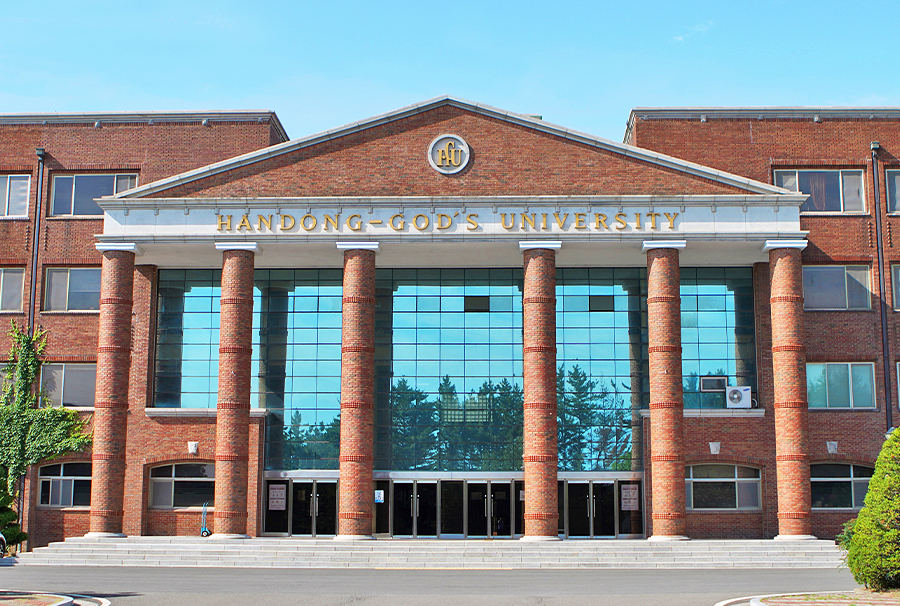

The School of Spatial Environment System Engineering offers curricula that range from Construction Engineering to Urban Environment Engineering and the fields concerning the creation of our living spaces, so that various phenomena and issues that occur in the spatial domain can be resolved through systematic and creative approaches.
The School's objective is to cultivate talented young people who use perceptivity with a keen artistic eye in the development of space, being able to apply state-of-the-art engineering theories from an eco-friendly standpoint using creative thinking to implement practical applications.
More information:click here
Drafting and CAD
(Spring&Fall)
Graphic language, along with verbal language is a basic and fundamental communication tool for the architects, planners, and engineers as well as. As such, aim of this course is to prepare the students to use a graphic language for their future design and planning courses. The students will practice on the hand drawings, model makings and introduce electronic tools such as Computer Aided Design (CAD). Which will be used as a tool for their chosen field of studies.
Mechanics of Materials
(Spring)
This course provides the students with the basic capability essential to the engineering design of structures with solid materials. The main topics of this course include the concepts of stress and strain, and the calculations of stress and strain due to axial load, torsion, bending, and shear of a simple member. In addition, transformation of stress and strain, stability of columns, and basics of energy methods will be also included.
Fluid Mechanics
(Spring)
This course is an introductory course to fluid mechanics. Fluid mechanics is the study of fluids under all conditions of rest as well as motion. Its approach is analytical and mathematical rather than empirical; it is concerned with basic principles of fluid motion that provides the solution to numerous and diverse problems encountered in many fields of engineering, regardless of the properties of the fluids involved. However, emphasis is placed upon gaining insight into the operative physical processes.
Architecture Design Studio 2,3
(Spring)
The students are required to understand the dynamics of the community and provide resolute solution to enhance the livability of the section of the town they are dealing with. Understanding the fabric of the city, local culture, historic factors, density of the population, age distribution, local economy, physical structure of the town, are some of the issues that needs to be considered. Project should be carried out assiduously understanding prerogative of the native population but same time through urban design intrusion provide a direction that can act as a catalysis for the vibrant community.
Structural Analysis
(Fall)
- In the field of Civil and Architectural Engineering, the final products are usually structures, which should be designed and constructed. In this procedure, the key part is Structural Analysis to be discussed in this course.
- This course explains the basic principles and concepts of structural analysis and design, considering the physical behavior of structures. This course teaches the basic techniques for analyzing structures and structural members, including trusses, beams, and frames. The topic includes:
- Analysis of statically determinate structures to calculate reactions, and internal member forces such as axial forces, shear forces, and bending moments
- Influence lines for statically determinate structures
- Deflections
- Analysis of simple statically indeterminate structures.
Environmental Hydraulics and Water Resource Engineering
(Fall)
Hydraulics is a branch of science that deals with practical applications of water and water resources. Civil or environmental engineers are largely, though not exclusively, concerned with one liquid, namely water. However, environmental hydraulics deals with not only water in motion but also pollutants or sediments transported through water. This course is designed to provide a comprehensive coverage of environmental hydraulics that is appropriate to students who have basic understanding of fluid mechanics. However, for those who are not exposed to fluid mechanics, first 3 weeks will be devoted for reviewing fundamentals of fluid mechanics which is instrumental to understand hydraulics.
Structural Engineering & Design
(Spring)
The main goal of this course is to teach the students how to design simple structures made of wood, steel, and reinforced concrete. The main topics include the review on Mechanics of Materials, and Structural Analysis. This course deals with structural systems, and load estimation. In addition, basic design concepts of flexure and shear will be discussed. Design methods such as WSD, LRFD, and LSD, together with the concepts of structural safety will be included. As design practices, design of members with wood, steel, and reinforced concrete will be covered. For a new design concept, optimum design method will also be introduced.
Environmental Ecological Engineering 1
(Spring)
This course is an introduction to environmental engineering. Special emphasis is given mainly on the solution of problems of environmental sanitation, notable in the provision of safe, palatable, and ample public water supplies; the proper disposal of or recycle of wastewater, the adequate drainage of urban and rural areas for proper sanitation; and the control of water pollution, and the social and environmental impact of these solutions.
Spatial Numerical Analysis
(Spring)
The basic concepts od numerical analysis and its use in solving engineering problems are introduced. After discussing various root finding methods several methods of solving algebraic equations are introduced. A variety of curve fitting and linear and nonlinear regression methods is discussed. Also various schemes of numerical integration are introduced. Fourier analysis and FFT are discussed.
Land Use Planning and Development
(Spring)
Land use planning is the process of regulating the use of land in an effort to promote more desirable social and environmental outcomes as well as a more efficient use of resources. Goals of land use planning include environmental conservation, restraint of urban sprawl, minimization of transport costs, prevention of land use conflicts, and a reduction in exposure to pollutants. By and large, the uses of land determine the diverse socioeconomic activities that occur in a specific area, the patterns of human behavior they produce, and their impact on the environment.
The course aims to: ensure that students have a functional and integrated understanding of the dynamics of urban land use; and demonstrate how to effectively utilize policies and planning instruments to manage urban growth and achieve sustainable, equitable and efficient development outcomes.
Reinforced Concrete Engineering
(Fall)
Reinforced concrete is the most widely used structural material in the construction field. This course teaches the fundamental Design concepts and Design methods essential to Reinforce Concrete Structures including:
- Introduction and Histories
- Material Properties
- Design of Reinforced Concrete Beams from flexure, and shear
- Design of Columns
- Design of Slabs
- Design of some example structures such as Footings and Retaining Walls.
Site Planning and Design
(Fall)
- This semester the students will face multiple issues in dealing with housing issues. Following are some of the issues that will be discussed in the class:
- Basics in housing development
- Housing as community development
- Urban reconstruction via housing / Housing within urban structure
- Social responsibilities in housing
This is a unique class where the students will combine the knowledge of planning with architecture. Housing development is not simply creating an expressive architecture or designing a complex of the houses to satisfy the programmatic needs. Housing or any kind development must satisfy the needs of all the participants; and of all the participants it must finally satisfy the final user, the people who will be using it daily. It is a responsibility of the Architect to intervene to give as much influence as possible for the end user group, the people who actually use the facility. Housing development also means responsibility to the social structure which the project is implemented; that is to say housing should be sensitive and consider the needs of the existing community. In order to be an influential designer, the designer must understand the process of the development. A development as a design - process, is intrinsically cultural, economical, and political. This class will identify each force that affects the development and identify each participant and their goals. By understanding the separate goals of each participant in the development process the architects can be more influential on the quality of the housing and the environment. The class shall be composed of lectures and design exercises culminating with final project presentation. Each student is expected to apply the concepts taught at the class into their design creatively.
Theory of Urban Structure
(Fall)
Cities are diversified, complex and constantly changing. Why does this happen? What are the characteristics?Questions related to cities like this, especially urban structures, will be sorted out through traditional or new theories and concepts. Through this, we will try to understand the mechanism of formation and transformation of urban structure, understand the nature of the present problems we are experiencing, and predict future cities.
Environmental Ecological Engineering 2
(Fall)
This course is improved course of 'Environmental Ecological Engineering 1' to environmental engineering. More details will be uploaded on the notice board of this class by professor.
Geotechnical Foundation Engineering
(Fall)
The basic concepts in soil mechanics, geotechnical engineering and structural mechanics are presented and reviewed. They will be used in developing the ideas and procedures that are popularly used in the practice of foundation engineering and design. Specifically, lateral earth pressures, bearing capacity and Mohr-Coulomb failure criterion are considered. Detailed design considerations and guidelines are given to the design of shallow footings (spread footing design) and are extended to trapezoid-shaped footings, and settlement of elastic foundations. Sheet piles are considered for various excavations and constructions. Another important class of foundation design for deep foundations is also discussed including friction piles in cohesionless soils, bearing capacity from Standard Penetration Test of cohesionless soils, friction piles in cohesive soils and piles groups. The final phase of the course will involve practical utilization of the acquired knowledge to a realistic building or structure.
Numerical Modeling for Scientists and Engineers
(Fall)
Students will be learned the basic concepts of numerical solutions to various partial differential equations that arise in engineering science and use the Finite Difference Methods and the Method of Weighted Residuals. In addition, students will understand the stability of the transient problems and apply numerical methods to various practical problems. Lastly, they will gain the ability to interpret the results of numerical computations.
Urban Planning and Design Lab
(Spring)
This class can be divided into two specific parts. The first part is what we call “Design the city”. It is about how we can find the problems of urban space and how to define and cure the spatial problems. The students are going to find their subject on the basis of their independent thinking, and they will narrow down those subjects into a few team projects through their debate and gaming. Finally, they, as a few teams, will find the most valuable ideas about how we can transform the city and settle down the found problems.
The Second part is what we call “Making the city”, and more specifically, new town designing. The students will be choosing the probable sites for developing a new town, and they will be focused on total design or master plan of the town till the end of the semester. The sites can be actual new towns which are going under planning process or imaginary new towns based on the students’ imagination.
Environmental Impact Assessment
(Spring)
In this subject, students will be able to learn about the system and theory of environmental impact assessment in the first half, participate directly in the environmental impact assessment process for actual development projects, and prepare an environmental impact assessment report in the second half.
Theory of Housing and Habitation
(Fall)
This subject consists of two parts: housing theory and residential theory. In the housing theory section, we learn about the nature of housing, characteristics of the housing market, government policies to stimulate the low-income housing market, for example Public Housing, Housing Boucher, as well as Filtering Theory. In residential theory, the elements of housing planning and design are learned, especially about Elderly housing and future housing Eco-Home and Intelligent housing. It also learns about postmodern tendencies about the theory of housing through lighting in modern architectural history, especially about co-residential complexes, such as Howard, Le Corbusier, Jane Jacobs, etc.
Vibration and Waves
(Fall)
This course is intended as an introduction to the study of vibrations and waves in general. The vibrations or oscillations of mechanical systems as well as natural systems constitute one of the most important field of study in engineering and science. Subjects discussed in the course include free surface waves, periodic motions, the free vibrations of physical systems, forced vibrations and resonance, Coupled oscillations and normal modes, Fourier analysis, progressive waves, boundary effects and interference, etc.
Soil Mechanics and Engineering
(Unconfirmed)
The basic concepts of soil mechanics such as phase relationship, particulate nature, permeable to fluid, total and effective stresses are introduced. Fluid flow through soil is discussed with the aid of flow nets and is also considered for anisotropic, non-homogeneous, and transfer conditions. The effective stress principle is introduced and the responses of the effective stress in the soil are discussed. Influence of seepage on the effective stress is also discussed. The strength properties of soil are discussed in terms of cohesion and internal friction angle. Various schemes of soil testing to determine soil shear strength are considered. The elastic deformation in a soil due to stress change is discussed. The consolidation theory is introduced and the stress path method, methods for determination of the consolidation coefficients are discussed.

We expect a tremendous increase in demand for skills in the areas of urban and regional planning, social capital and infrastructure (roads, railways, ports, airports, etc.), architecture, housing, social welfare facilities, and environmental pollution prevention facilities in industries within Korea and abroad. Certainly an increasing number of undeveloped and developing countries are expected to open their doors to welcome those who can aid their development policies and projects. Graduates have found their places in private companies, including construction firms, technology and service companies, and design firms. Some graduates offer public service in public and government agencies such as Korea Land Housing Institute, Korea Water Resources Corporation, and the Urban Development Corporation. After a few years of experience, they may acquire the professional qualifications as architects or engineers to open their own offices.
